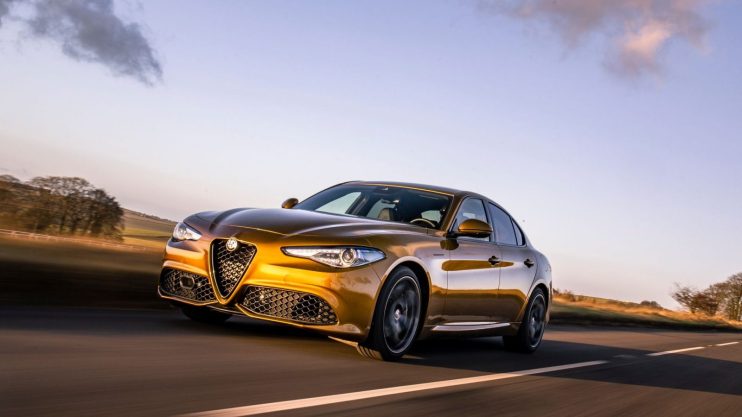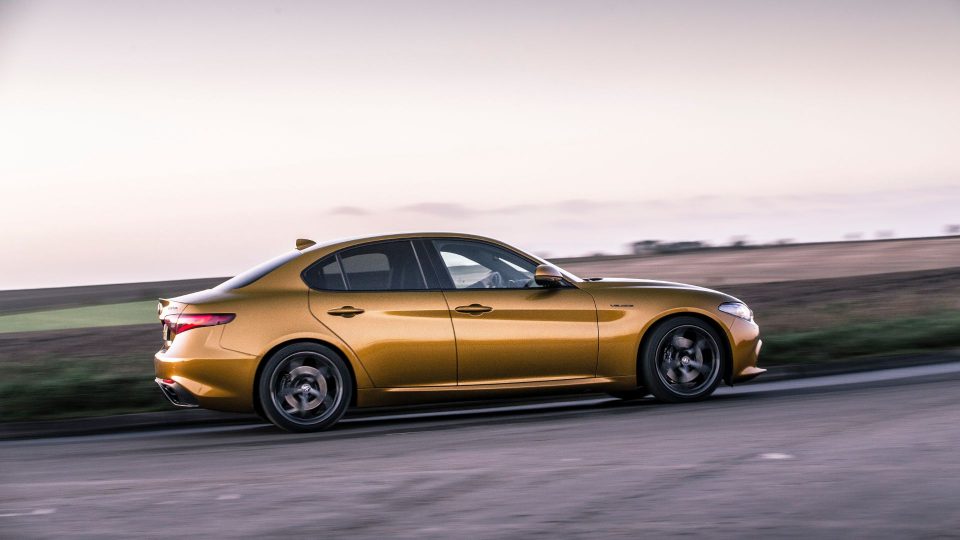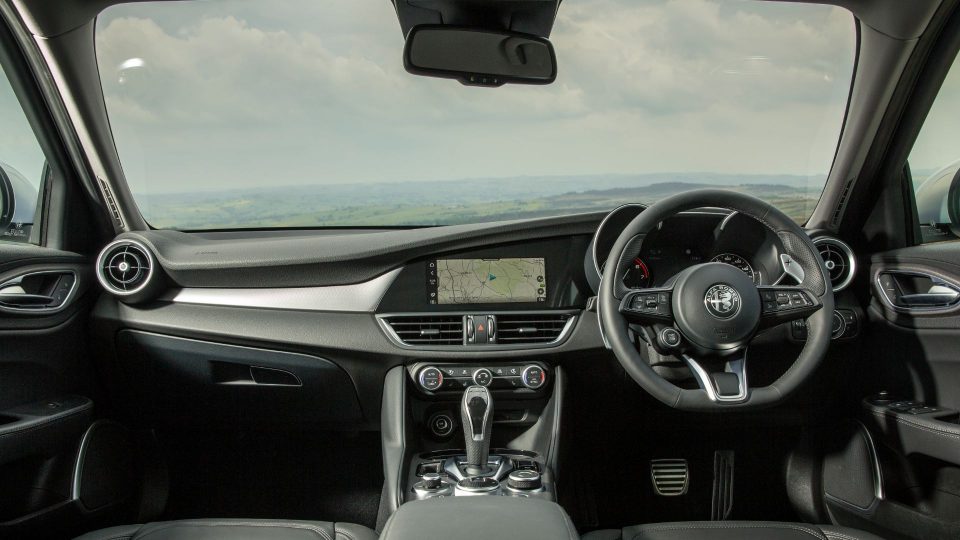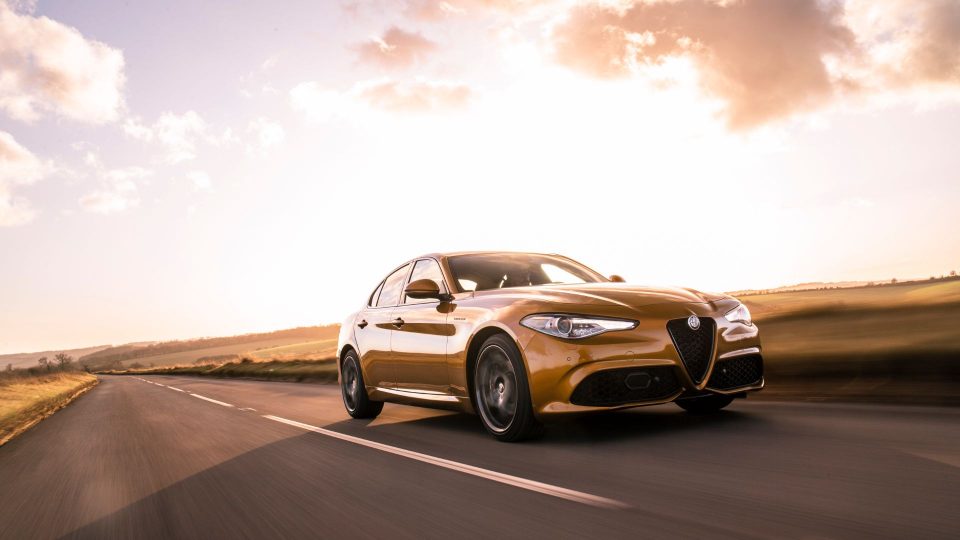Alfa Romeo Giulia Veloce review: a very Italian affair

I didn’t ‘get’ Alfa Romeo until the Giulia Veloce launch in 2017. My Damascene conversion took place at the Museo Storico near Turin, where many of the great cars from the marque’s history are on show. And what a history it has!
There’s the 1935 Bimotore, a racer with two 270hp straight-eight engines that even Alfa’s official guide book describes as ‘cantankerous and difficult to tame’. Or the Disco Volante (‘Flying Saucer’ in English), a voluptuous vision of the future from 1952. Or the wild, wedge-shaped 1968 Carabo concept, which inspired the Lamborghini Countach.
Then there are the production cars. The decadent 8C 2900 Lungo of 1938, the Montreal coupe of 1970 (designed to embody ‘man’s utmost automotive aspiration’) and the knee-trembling 33 Stradale of 1967 – a strong candidate for the most beautiful car ever made.

We followed our museum tour with lunch in a trattoria on the shore of Lake Como, before heading for the hills. At this point, many Alfa Romeos from recent history would have punctured my newly swollen heart with a dagger of disappointment, but the Giulia lived up to its looks.
At the time, I said: ‘My only real criticism relates to its interior, which feels a little low-rent in places… Alfa has hit the spot, proving middle-ground doesn’t have to mean middle of the road.’
Now there’s an updated Giulia Veloce and – guess what? – the improvements focus on the interior. Sadly, I’ve traded sun-drenched Como for simply drenched Croydon (thank you, Covid-19), so igniting that passione may prove tougher this time. Let’s see…
I’m not sold on the new ‘GT Junior Ocra’ paint colour in these press photos (my car was the much lovelier Misano Blue), but the Giulia remains a fine looking machine. Its shield grille and offset front number plate are unmistakably Alfa, while its taut curves err more towards elegance than aggression. The Veloce also gains matt-black badges, sportier bumpers and an upswept rear diffuser.

Open the light door – made of aluminium – and the cabin feels classier than before. The horrible, plasticky gear lever has been banished for something more solid (although you’ll still prefer using the long, slender paddles, which are deliciously tactile) and infotainment is much improved. The 8.8-inch screen has a clearer interface and now offers clickwheel and touch control, along with Apple CarPlay and Android Auto compatibility.
OK, so quality isn’t as ‘German’ as the Giulia’s key rivals, but that matters less when you start driving. Its steering is fast and flighty like a Ferrari, while its rear-driven chassis feels superbly balanced, aided by a modest 1,429kg kerb weight and 50/50 weight distribution. On December roads, the back end felt coltishly keen to step out, although the stability control reins it in quickly. As for the ride, it’s on the firm side of comfortable, partly thanks to enlarged – and gorgeous – 18-inch ‘teledial’ alloys.
The 280hp Veloce is the middle rung on the Giulia ladder, filling the yawning chasm between the 190-200hp Super, Sprint and Lusso models, and the fearsome 510hp Quadrifoglio. Its 2.0-litre turbocharged four serves up 0-62mph in a brisk 5.7 seconds and 149mph flat-out. I only wish it sounded more musical; the marque that made the operatic Busso V6 can do better.

Nonetheless, while the Quadrifoglio is (deservedly) splashed across magazine covers and desktop wallpapers, the Veloce feels like the sweet-spot of the range. It offers ample performance to enjoy on the road and a genuine split personality, thanks to Alfa’s ‘DNA’ dial. In N-for-Normal mode it feels settled and easygoing, then switching to D-for-Dynamic draws out its claws. Throttle response is sharper, the (optional) adaptive dampers stiffen and the systems allow more slip. In the real world, you’ll rarely want for more.
Alfa Romeo’s reputation for reliability – or lack of it – continues to impact resale values, meaning the Guilia costs more on monthly finance than many rivals. The £42,575 Veloce, for example, is currently £399 a month with a hefty £6,999 deposit.
Yet according to the latest What Car? survey, Giulia reliability, while hardly exceptional, is no worse than some of its German competitors. In the ‘executive cars up to five years old’ class, it finished 14th out of 19 models, ahead of the Mercedes C-Class, Volkswagen Passat and Audi A4 diesel.

Motoring Research founder Peter Burgess owned a Giulia Veloce until recently and told me: “Another Audi or a BMW would be such a boring choice, while the Alfa seemed tantalisingly leftfield. I simply loved it – 280hp is enough to give a really stimulating drive. The Giulia was comfortable, handled well and, yes, it was as reliable as my Audi. With the improved dashboard on the facelifted version, I’d have another at the drop of a hat. Oh, and this was my first Alfa.”
The circumstances were very different, but my second date with the Giulia Veloce didn’t extinguish the spark. It’s the kind of car you turn and look back at after walking away. I can’t imagine ever doing that with an Audi A4.
Tim Pitt writes for Motoring Research
PRICE: £42,575
0-62MPH: 5.7sec
TOP SPEED: 149mph
CO2 G/KM: 195
MPG COMBINED: 32.8